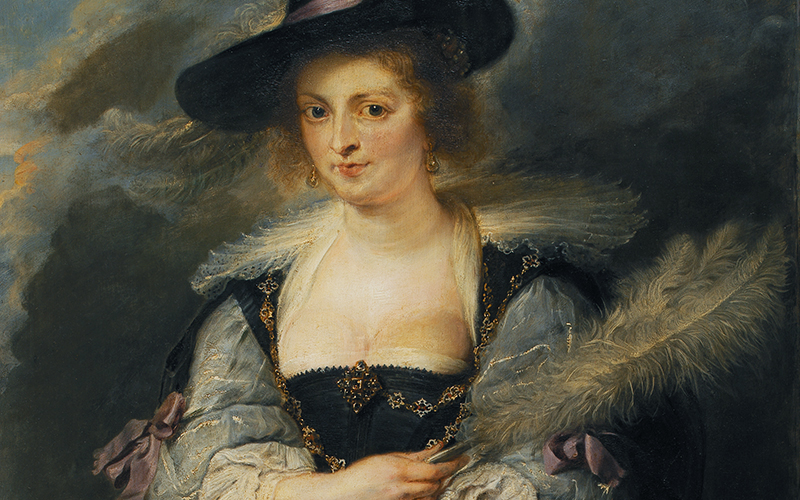Helena Fourment

In December 1630, at only 17 years old, Helena Fourment became the second wife of Peter Paul Rubens. At the time, the Flemish painter was 53. The marriage lasted around ten years, until the artist’s death in 1640, and the couple had five children.
Despite the large age difference and short marriage, Rubens’ young muse posed for the artist many times, appearing in individual and family portraits, with her husband and children, and in paintings of a religious or mythological nature. Her beauty was immortalised in some of the most iconic baroque canvasses known to exist, belonging to the collections of important museums, such as the Kunsthistorisches Museum, in Vienna; the Alte Pinakothek, in Munich; the Louvre, in Paris; and the MET, in New York.
In the portrait belonging to the Gulbenkian Collection, Helena Fourment appears in an elegant black satin dress and a large hat decorated with ostrich plumes, according to the fashion of the time. Rubens’ mastery is revealed in the skill with which he paints the different materials and their textures.
As well as winning Rubens’ affection, Helena Fourment became the protagonist of another love story in the collection: it is known that this painting was one of Calouste Gulbenkian’s favourites and that he used to stand in front of the canvas admiring it.
The work, once part of the collection of Sir Robert Walpole and, later, of Empress Catherine II of Russia and the Hermitage Museum in Saint Petersburg, was acquired by Calouste Gulbenkian through the Antikvariat in 1930. It was installed in the painting gallery of his house at no. 51, Avenue d’Iéna, before being lent to the National Gallery in London and the National Gallery of Art in Washington, where it was displayed until it was transferred to Portugal.
A Collection of Stories
On a weekly basis, we shared a story around Calouste Gulbenkian’s collection. This section was created in 2020, which is why the articles refer to the Calouste Gulbenkian Museum collection as the Founder’s Collection.
Other stories